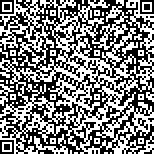| 引用本文: | 秦佳双, 顾大形, 倪隆康, 何 文, 阮杨春, 黄玉清, 王 权.桂北岩溶区与非岩溶区植物叶片含水率高光谱反演[J].广西植物,2021,41(5):726-737.[点击复制] |
| QIN Jiashuang, GU Daxing, NI Longkang, HE Wen,
RUAN Yangchun, HUANG Yuqing, WANG Quan.Hyperspectral inversion of leaf water content at karst and non-karst areas in North Guangxi[J].Guihaia,2021,41(5):726-737.[点击复制] |
|
| |
|
|
| 本文已被:浏览 6926次 下载 2200次 |

码上扫一扫! |
|
|
| 桂北岩溶区与非岩溶区植物叶片含水率高光谱反演 |
|
秦佳双1, 顾大形1*, 倪隆康1, 何 文1, 阮杨春2, 黄玉清2, 王 权3
|
|
1. 广西喀斯特植物保育与恢复生态学重点实验室, 广西壮族自治区
中国科学院 广西植物研究所, 中国 广西 桂林 541006;2. 北部湾环境演变与资源利用教育部重点实验室, 广西地表过程与智能模拟重点实验室, 南宁师范大学,
中国 南宁530001;3. 日本静冈大学农学部, 日本 静冈 422-8529
|
|
| 摘要: |
| 叶片水分状况是反映植被生理状况的重要指标,构建高普适性的植物叶片含水率高光谱反演模型对准确评价岩溶和非岩溶植被生态功能具有重要意义。该文以我国西南典型区域内岩溶区与非岩溶区共17种植物694个样品为研究对象,同步测量叶片含水率和反射光谱,采用单波段、差值型、比值型、归一化型等四类光谱指数模型,对反射光谱及一阶导数光谱进行全波段搜索分析。结果表明:光谱指数D2048-D1733的建模与验证结果均最好,为岩溶植物叶片含水率的最佳估计光谱指数; 对于非岩溶植物,光谱指数D2356/D1885和(D2356-D1885)/(D2356+D1885)建模与验证结果均相差很小,均可作为叶片含水率最佳估计模型。该研究结果还表明叶片绒毛对岩溶植物叶片含水率反演光谱指数构建影响不大。总体上,新构建的最优光谱指数对岩溶区与非岩溶区植物叶片含水率的拟合效果优于传统指数,具有较好的普适性,可为精准评估桂北地区植被水分状态提供科学依据。 |
| 关键词: 岩溶区, 叶片含水率, 叶片绒毛, 光谱指数, 高光谱 |
| DOI:10.11931/guihaia.gxzw202009018 |
| 分类号:Q945.17 |
| 文章编号:1000-3142(2021)05-0726-12 |
| 基金项目:广西创新驱动发展专项(桂科AA-17204087-9); 广西自然科学基金(2018GXNSFAA294023, 2019GXNSFBA245036); 广西科技计划项目(桂科AD20159068); 国家自然科学基金(41830648, 31870382); 广西植物研究所基本业务费(桂植业18005); 广西喀斯特植物保育与恢复生态学重点实验室自主研究课题(18-A-02-01,19-050-6); 广西科学院基本业务费(2019YJJ1009)[Supported by the Science and Technology Major Project of Guangxi(AA-17204087-9); Natural Science Foundation of Guangxi(2018GXNSFAA294023, 2019GXNSFBA245036); Science and Technology Program of Guangxi(AD20159068); the National Natural Science Foundation of China(41830648, 31870382); Fundamental Research Fund of Guangxi Institute of Botany(18005); Guangxi Key Laboratory of Plant Conservation and Restoration Ecology in Karst Terrain(18-A-02-01, 19-050-6); Fundamental Research Fund of Guangxi Academy of Sciences(2019YJJ1009)]。 |
|
| Hyperspectral inversion of leaf water content at karst and non-karst areas in North Guangxi |
|
QIN Jiashuang1, GU Daxing1*, NI Longkang1, HE Wen1,
RUAN Yangchun2, HUANG Yuqing2, WANG Quan3
|
|
1. Guangxi Key Laboratory of Plant Conservation and Restoration Ecology in Karst Terrain, Guangxi Institute of Botany, Chinese Academy of
Sciences, Guilin 541006, Guangxi, China;2. Guangxi Zhuang Autonomous Region and Chinese Academy of Sciences,
Key Laboratory of Earth Surface Processes and Intelligent Simulation, Nanning Normal University, Nanning
530001, China;3. Department of Agriculture, Shizuoka University, Shizuoka 422-8529, Japan
1. Guangxi Key Laboratory of Plant Conservation and Restoration Ecology in Karst Terrain, Guangxi Institute of Botany, Chinese Academy of
Sciences, Guilin 541006, Guangxi, China; 2. Guangxi Zhuang Autonomous Region and Chinese Academy of Sciences,
Key Laboratory of Earth Surface Processes and Intelligent Simulation, Nanning Normal University, Nanning
530001, China; 3. Department of Agriculture, Shizuoka University, Shizuoka 422-8529, Japan
|
| Abstract: |
| Leaf water content is a key indicator that reflects the physiological conditions of vegetation. It is of great significance to construct a highly universal hyperspectral inversion model of the water content of leaves to accurately evaluate the ecological functions of karst and non-karst vegetation. As a result, developing hyperspectral inversion models of leaf water content for karst and non-karst vegetation, respectively is becoming more necessary. In total, 694 samples from 17 plant species were taken at karst and non-karst areas in North Guangxi. Leaf water content and reflectance spectrum ranging from 350 nm to 2 500 nm of all leaf samples were measured simultaneously. Four model structures including single-band, difference, ratio, and normalized difference were employed in this study. All possible index models with single waves and couple of two waves based on both reflectance spectrum and first derivative spectrum were related to leaf water content for karst and non-karst vegetation, respectively. The results were as follows: The spectral indexes of D2048-D1733 had the best modeling and verification result, and was the best index model for estimating leaf water content of karst plants; For non-karst plants, the spectral index of D2356 / D1885 and(D2356-D1885)/(D2356 + D1885)had similar results, and both of them could be used as the best estimation indexes of leaf water content. This results also showed that, for karst plants, the leaf pubescence had little effect on the construction of inversion model of leaf water content. Generally, the newly constructed optimal spectral index has a better fitting effect on the leaf water content in karst and non-karst areas than the traditional index, and has a good general applicability, which could provide a scientific basis for the accurate assessment of vegetation water state in North Guangxi. |
| Key words: karst area, leaf water content, leaf pubescence, spectral index, hyperspectrum |
|
|
|
|
|